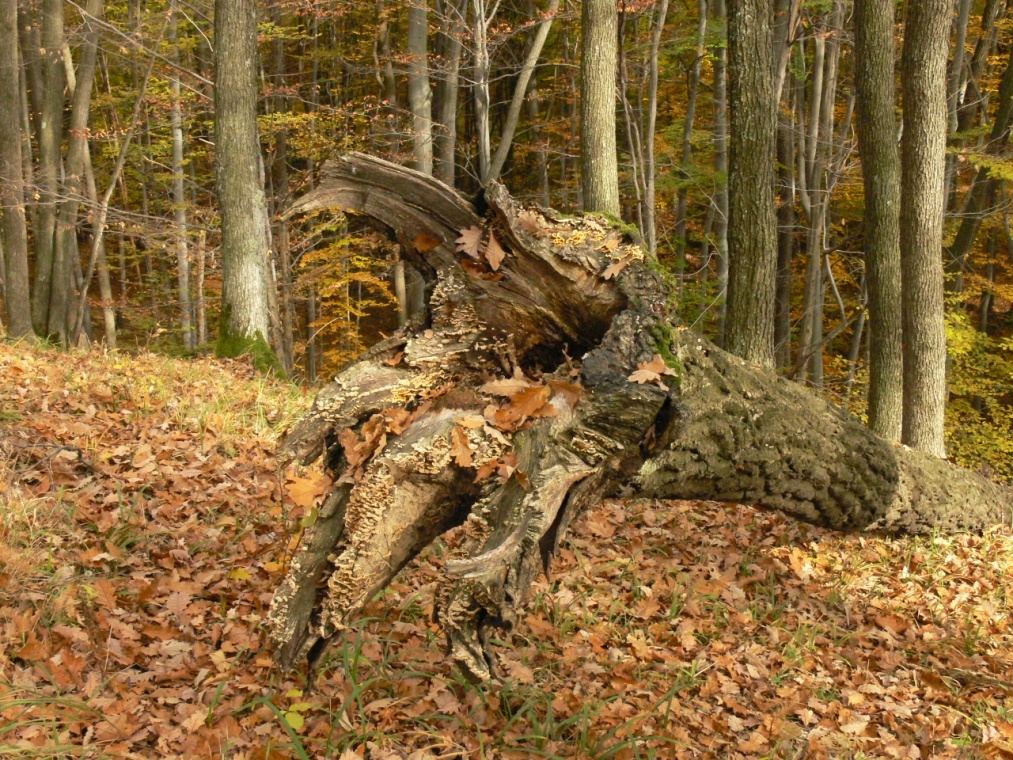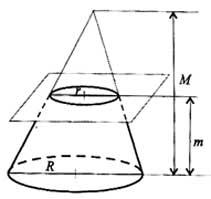Dead wood calculation
Dead wood is understood to mean lying dead trees that mean size requirements. The whole area of a sampling plot is mapped for lying dead trees, parts of branches and stem reaching 10 cm in apical diameter and lying at least 1 m long. Dead trees are recorded by taking note of the spatial coordinates of the terminal any angular points of deadwood, where diameter measurements are also taken (r, R). The truncated cone defined by the imaginary line of the longitudinal axis and the initial and terminal diameters of lying deadwood, including cone angular points, if any, are described by a horizontal projection enclosed in a polygon. When wood volume is calculated, spatial coordinates are used, and hence they reflect true values.

Lying deadwood
The length (m) and volume (V) of lying deadwood are calculated automatically with the volume calculation relying on the truncated cone formula.


where:
| V | is the volume of the truncated cone (dead wood), |
|---|---|
| m | is the height of the truncated cone, |
| R | is the radius of the bottom disk, |
| r | is the radius of the top disk. |
Dead wood is recorded when it reaches 1 m in length but only a part shorter than 1 m is actually located on the sampling plot. In the latter case, only the volume of the part that is actually inside the borders of the sampling plot is taken into account. The Field-Map device also stores the altitude coordinates of angular points, hence wood volume is always available in the form of a 3D projection. This is especially important on sloping terrain, where "2D wood volume" would be an underestimation, and also in cases where 'lying' deadwood is not actually lying on the ground but on some field object (rock, sample tree, stump, etc.).